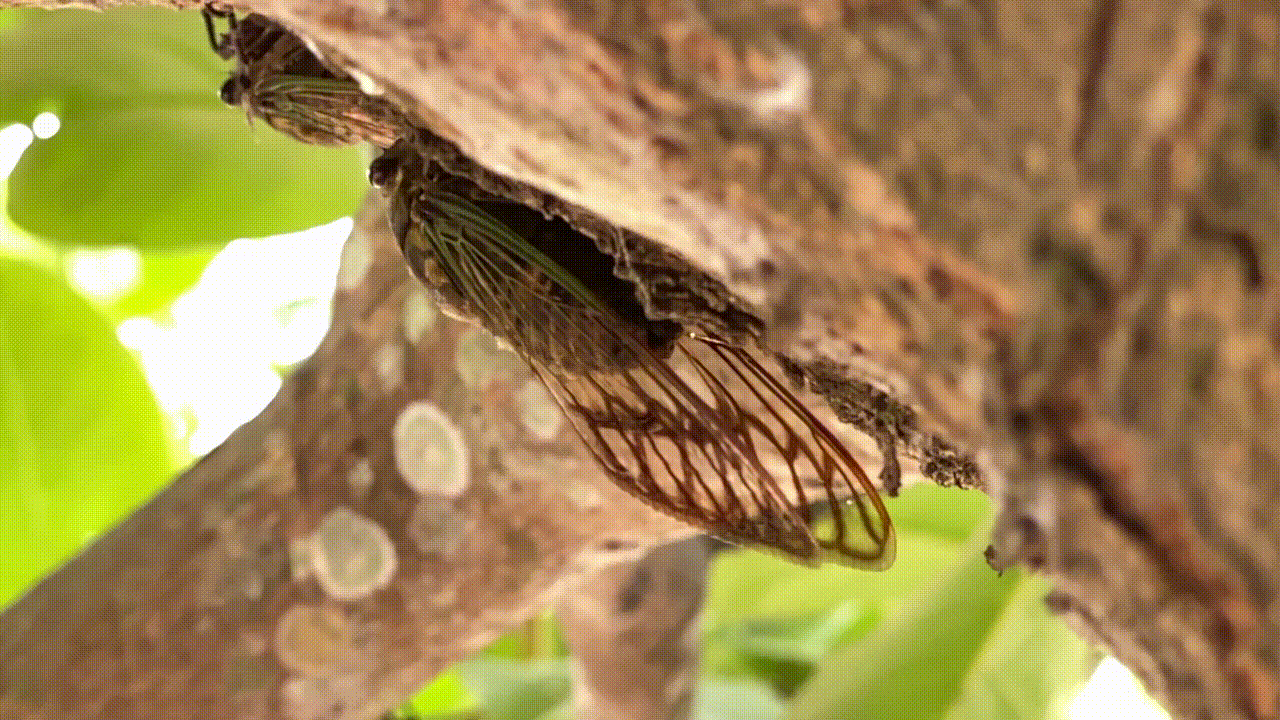Physics
Physicist Peter Higgs, Who Prompted a Decades-Long Search for a Tiny Particle, Dies at 94
The Nobel Prize winner predicted the Higgs boson, a fundamental particle that scientists successfully discovered in 2012, explaining how particles get their mass and underlying a key theory of the universe
'Oppenheimer' Opens in Japan Eight Months After Worldwide Release
The acclaimed biopic of the Manhattan Project's leader has been met with mixed reviews by Japanese audiences
Floating Board From 'Titanic' Sells for Over $700,000
The infamous prop has long been the source of heated debate: Did Jack really have to die?
Melting Polar Ice Sheets Are Slowing Earth's Rotation. That Could Change How We Keep Time
As ice melts into water and flows toward the equator, it redistributes mass around the Earth, affecting the planet's spin, a new study finds
Manhattan Project Report Signed by J. Robert Oppenheimer Sells at Auction
The document was "likely the very first publicly available report on the creation of the bomb," according to RR Auction
Don't Look Up: Cicadas Produce High-Speed Jets of Urine
The noisy, winged insects produce pee the same way that much larger animals do, according to a new study
How the Atomic Bomb Set Brothers Robert and Frank Oppenheimer on Diverging Paths
For one of them, the story ended with a mission to bring science to the public
How Ancient Texts Can Shed Light on Auroras
Documenting episodes of the phenomenon thousands of years ago may help us predict damaging solar storms in the future
Building Used by Marie Curie Saved From Demolition
Cultural heritage supporters are hoping to see the facility listed as a protected site
Paper That Claimed a Room-Temperature Superconductor Breakthrough Is Retracted by the Journal 'Nature'
The discovery, which would have revolutionized energy, was surrounded in controversy from the start
Explaining the Colorful Quantum Discoveries That Earned the Nobel Prize in Chemistry
Moungi Bawendi, Louis Brus and Alexei Ekimov won the award for their work developing tiny “quantum dots” that light TV displays and enable medical imaging
Scientists Studying High-Speed Electrons With Lasers Win Nobel Prize in Physics
Pierre Agostini, Ferenc Krausz and Anne L’Huillier created pulses of light so short that they can be used to observe the behavior of electrons
Mysterious Planet-Like Objects in the Orion Nebula Are Baffling Astronomers
The James Webb Space Telescope has observed dozens of Jupiter-mass, often paired objects, nicknamed JuMBOs, raising questions about how they formed
The Baseball Player-Turned-Spy Who Went Undercover to Assassinate the Nazis' Top Nuclear Scientist
During World War II, the OSS sent Moe Berg to Europe, where he gathered intel on Germany's efforts to build an atomic bomb
James Webb Telescope Captures the Glowing Ring Nebula in Magnificent Detail
The colorful ring, located some 2,600 light-years away from Earth, is made from the remnants of a dying star
The Real History Behind Christopher Nolan's 'Oppenheimer'
The "father of the atomic bomb" has long been misunderstood. Will the new film finally get J. Robert Oppenheimer right?
Scientists Find Ghostly Neutrino Particles From the Milky Way
It's no surprise that neutrinos come from within our galaxy, but the tiny, chargeless particles are very hard to detect
Gravitational Waves Create a Constant 'Hum' Across the Universe
Breakthrough research suggests the continuous ripples in spacetime could be caused by pairs of supermassive black holes, spiraling toward collisions
An Exclusive Behind-the-Scenes Look at the Los Alamos Lab Where J. Robert Oppenheimer Created the Atomic Bomb
In never-before-seen photographs, explore the secret U.S. facility and home to the Manhattan Project scientists who developed the first nuclear weapon
This Physicist Uses Drones to Create Giant Light Cones in the Desert
Evoking a key concept in relativity, Elliot McGucken traces out hourglass-like shapes in the sky that stretch as high as a seven-story building
Page 1 of 26
:focal(1500x1000:1501x1001)/https://tf-cmsv2-smithsonianmag-media.s3.amazonaws.com/filer_public/16/2d/162df984-1133-47d7-a5a7-8710e919db04/gettyimages-187744393.jpg)
:focal(1500x1000:1501x1001)/https://tf-cmsv2-smithsonianmag-media.s3.amazonaws.com/filer_public/5c/d2/5cd2e821-afc4-4f77-994d-7e31a5655038/gettyimages-2118335371.jpg)
:focal(2018x1057:2019x1058)/https://tf-cmsv2-smithsonianmag-media.s3.amazonaws.com/filer_public/4d/70/4d702b71-67a5-422c-b244-63baa08723ee/gettyimages-1192757498_1.jpg)
:focal(2636x1481:2637x1482)/https://tf-cmsv2-smithsonianmag-media.s3.amazonaws.com/filer_public/1d/53/1d53a3a9-fd29-4375-bc81-f083c38d05cb/gettyimages-2032103907.jpg)
:focal(1050x1010:1051x1011)/https://tf-cmsv2-smithsonianmag-media.s3.amazonaws.com/filer_public/df/89/df8960ae-7140-4fb7-80e4-2dcf40d56fd8/106_1_oppenheimer_manhattan_report.jpg)

:focal(800x602:801x603)/https://tf-cmsv2-smithsonianmag-media.s3.amazonaws.com/filer_public/c8/0e/c80e91dc-385f-4535-b777-bcda81578123/frankoppenheimer_web.jpg)
:focal(800x602:801x603)/https://tf-cmsv2-smithsonianmag-media.s3.amazonaws.com/filer_public/72/ba/72ba90f4-730a-47b5-acd1-80a445b88a52/aurora_nagoya_1770_web.jpg)
:focal(1845x1370:1846x1371)/https://tf-cmsv2-smithsonianmag-media.s3.amazonaws.com/filer_public/ee/02/ee02955c-a636-4f45-ace5-8c12b08504ef/gettyimages-613462004.jpg)
:focal(1921x1299:1922x1300)/https://tf-cmsv2-smithsonianmag-media.s3.amazonaws.com/filer_public/0b/6c/0b6cfcab-a068-4ead-bddc-94c3235c7fdf/gettyimages-615295606.jpg)
:focal(4128x2752:4129x2753)/https://tf-cmsv2-smithsonianmag-media.s3.amazonaws.com/filer_public/a3/5d/a35db345-bd5c-4e31-9f97-8344f28dfb6b/gettyimages-1705016177.jpg)
:focal(3954x2354:3955x2355)/https://tf-cmsv2-smithsonianmag-media.s3.amazonaws.com/filer_public/78/c7/78c73514-c052-40bd-820e-91e48e123595/gettyimages-1704131067.jpg)
:focal(700x480:701x481)/https://tf-cmsv2-smithsonianmag-media.s3.amazonaws.com/filer_public/6b/90/6b907f66-bdaf-46c3-af99-9d2c122b31bc/orion_nebula_in_nircam_long-wavelength_channel_1.jpg)
:focal(700x527:701x528)/https://tf-cmsv2-smithsonianmag-media.s3.amazonaws.com/filer_public/bc/15/bc157925-8f49-4f5b-b1fa-a942133c0d4b/berg2.jpg)
:focal(957x506:958x507)/https://tf-cmsv2-smithsonianmag-media.s3.amazonaws.com/filer_public/d3/06/d306ad0e-ed88-4191-9fc7-d96b72ad0989/ringnebula_nircam-e1691025726491.jpg)
:focal(850x489:851x490)/https://tf-cmsv2-smithsonianmag-media.s3.amazonaws.com/filer_public/ac/7f/ac7fc9ab-dd19-4beb-a907-0c87d5e0c3f3/oppenheimer-still1-62df17ed1c2fb-1.jpeg)
:focal(500x281:501x282)/https://tf-cmsv2-smithsonianmag-media.s3.amazonaws.com/filer_public/e0/cf/e0cf229e-6691-4114-a008-ff6c9af10ed5/gal_upgrade_2019week22_icl_214074e16.jpg)
:focal(1066x705:1067x706)/https://tf-cmsv2-smithsonianmag-media.s3.amazonaws.com/filer_public/c8/f4/c8f48b1e-6d24-4dd6-b137-0b343feb8457/gettyimages-st000710.jpg)
:focal(1600x1204:1601x1205)/https://tf-cmsv2-smithsonianmag-media.s3.amazonaws.com/filer_public/6a/68/6a6848fb-d3a1-4696-858b-a4519920df5e/opener_-_julaug2023_f06_losalamos.jpg)
:focal(1024x683:1025x684)/https://tf-cmsv2-smithsonianmag-media.s3.amazonaws.com/filer_public/eb/c6/ebc65ff6-86c3-4aad-a54b-8e7fca76f24c/light_cone_coast.png)